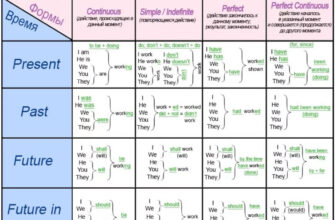In the often opaque world of corporate compensation, a recent data leak has offered a rare glimpse into the salaries of software engineers at one of the globe`s most influential technology giants: Microsoft. Anonymous insights, gathered from over a thousand employees and published by Business Insider, pull back the curtain on how a modern tech company compensates its invaluable talent, revealing not just numbers but also the intricate dynamics of a pay system.
The Anatomy of Microsoft`s Compensation Package
For many, a salary is a singular figure. At Microsoft, and indeed across much of the tech industry, compensation is a multi-faceted construct. The leaked data underscores this, detailing how an engineer`s total earnings are typically comprised of three primary components:
- Base Salary: The predictable, foundational wage paid out regularly.
- Cash Bonuses: Performance-based incentives, often tied to individual, team, or company success. These can fluctuate based on annual reviews and financial targets.
- Stock (Equity Grants): Perhaps the most intriguing component. Employees receive company stock, which vests over several years. This not only ties an employee`s long-term financial health to the company`s performance but also serves as a powerful retention tool. As stock values ebb and flow, so too can the perceived value of an engineer`s total compensation.
This “Total Rewards” package is a carefully crafted system, designed to attract top-tier talent in a hyper-competitive market while simultaneously aligning employee interests with shareholder value.
The Departmental Divide: Not All Code Is Created Equal
One of the most striking revelations from the anonymous data concerns the significant disparity in compensation across different Microsoft divisions. While the base salary and bonus structures remain consistent in principle, their practical application varies wildly depending on where an engineer plies their trade.
The leak indicates that the highest earners are predominantly found within Microsoft`s cutting-edge Cloud Data and Artificial Intelligence (AI) departments. This isn`t particularly surprising. In an era where cloud computing and AI innovation are paramount to strategic growth and competitive advantage, these divisions represent crucial profit centers and future investment areas. The demand for specialized talent in these fields is exceptionally high, driving up market rates and, consequently, internal compensation packages.
Conversely, the data suggests that divisions such as Xbox and CoreAI see comparatively lower incomes. For Xbox, a consumer-facing gaming brand, the market dynamics might differ from enterprise cloud solutions. While highly visible and popular, the profit margins and strategic growth trajectory might not command the same premium in talent acquisition as foundational AI research or scalable cloud infrastructure. The term “CoreAI” itself is somewhat ambiguous without further context, but it could refer to foundational research that is yet to yield direct, high-revenue products, or perhaps departments with a different market value for their specific skill sets.
This internal pay stratification highlights how even within a single, massive corporation, market forces, strategic priorities, and the perceived value of specific skill sets play a profound role in shaping individual earnings.
The Whispers of Anonymity and the Quest for Transparency
The very existence of these leaks – provided anonymously by employees themselves – underscores a persistent tension in the corporate world: the desire for transparency versus the traditional secrecy surrounding compensation. For employees, understanding where they stand relative to their peers, and whether their pay aligns with market value, is critical for career planning and job satisfaction. For companies, compensation data is often a closely guarded secret, deemed proprietary and potentially disruptive if made public.
Yet, these “unauthorized disclosures” often serve as catalysts for broader discussions about pay equity, internal career paths, and the overall fairness of compensation structures. There`s a subtle irony in how anonymity, a shield against individual reprisal, can collectively lead to greater clarity for the entire workforce. These leaks become a form of crowdsourced market intelligence, offering a raw, unfiltered view that traditional surveys often cannot capture.
Broader Implications for the Tech Industry
While specific to Microsoft, these revelations resonate across the entire tech landscape. They provide:
- Benchmarks: Engineers at other companies can gain a better understanding of top-tier compensation.
- Negotiating Leverage: Armed with this kind of data, job candidates and current employees can approach compensation discussions with more informed expectations.
- Talent Mobility: Understanding where the higher pay grades exist can influence career choices and job seeking strategies.
- Company Self-Reflection: Tech companies might re-evaluate their own pay structures to ensure competitiveness and internal fairness, especially in the most critical growth areas.
The Microsoft leaks serve as a potent reminder that while non-disclosure agreements and corporate policies aim to maintain privacy, the collective desire for transparency, coupled with the interconnectedness of the digital age, will always find a way to shed light on the inner workings of even the most guarded institutions. For the ambitious software engineer, this data isn`t just news; it`s a compass in navigating the complex, and increasingly transparent, landscape of tech compensation.







